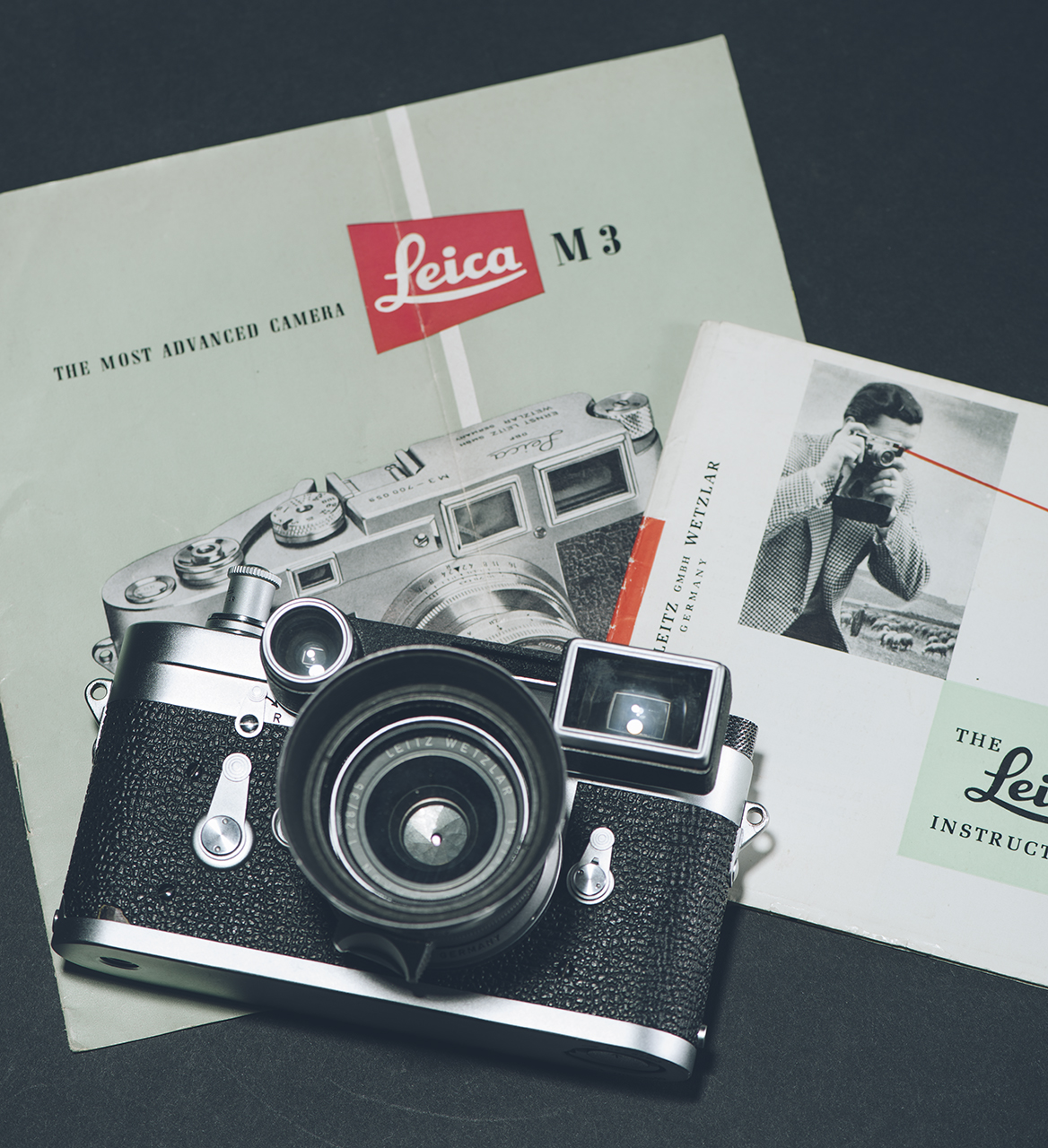Leica: As in “Legendary,” Part 2
Leica M3 with a 2.8/35mm Summaron lens with goggles to give a 35mm view. The M3 did not have 35mm bright lines in the viewfinder. The shutter release is a rare Leica accessory.
Text: Bob Rogen • Photos: Saroyan Humphrey
Gear | Two guys walk into a bar… in autumn 1954 and they happen to be friends who share enjoyment of photography with Leica cameras.
Mark: I brought my Leica IIIF with the 50mm Summitar lens. What’s in your bag?
Bob: Well, besides my IIIF, I brought the one we’ve read about.
Mark: No, you didn’t… you did?
Bob: Yes… I got the new M3. Here it is.
Mark: Amazing… it is a new world of Leica photography.
Related: Leica: As in “Legendary”
Now, this conversation might have taken place, or maybe not, but likely did in 1954 when the Leica M3 was introduced. Why? Well, it was a complete departure from the smaller Leica designs, a world apart from all that Leica users knew until then, except that the high standard set by Leica was maintained in materials, workmanship, and quality. Its size was bigger, its weight increase substantial but its feel was, oh, let’s say, even more confidence-inspiring with a solid feel in the hands. The rounded sides of the body fit the hands well. The position and throw of the film advance lever is just right to keep one shooting and advancing quickly but precisely. It was a revolution, this new design, and it proved so successful that it became the standard design for many future film and digital Leica cameras. Let’s look at the changes and improvements that the M3 featured, because we are talking about a revolution.



The picture of a Leica M3 next to a Leica IIIF says a lot at first glance. Different shape, different features, different arrangement of controls. Lever film advance, not a knob. (Initial film advance lever design was called a double stroke as two short strokes were used to advance the film; later M3 models are designated as single stroke as one long stroke of the lever advances the film.) Clear easy-to-read film counter that resets to zero after removing the film take-up spool. All shutter speeds on one dial. (Initial M3 design featured these shutter speeds: 1, 1/2, 1/5, 1/10, 1/25, 1/50, 1/100, 1/250, 1/500, 1/1000; later design used these shutter speeds: 1, 1/2, 1/4, 1/8, 1/15, 1/30, 1/60, 1/125, 1/250, 1/500, 1/1000). Big and thick strap lugs. A flip-up back door to load film. What? A flip-up back door? No more loading film from the bottom into an unseen area? Yes, a new way to load film: remove the base plate, open up the back door, and actually see where you load the film and align it with the take-up spool. You can imagine how different and better that was for the pre-M3 Leica user. Talking ‘bout a revolution.
Now note the addition of a lens release button at 9 o’clock at the front of the lens opening. Wait a minute! Addition of a lens release button? Why? Because not only did Leica change the shape, dimensions, and features on the M3, they changed the lens mount, making it a bayonet mount rather than the traditional threaded mount. This bayonet mount was used on the new lenses for the M3. Wait another minute! New lenses for the M3? Yes...we are talking about a revolution: a new camera body design and a new set of lenses made for it, starting with the venerable 50mm f2 Summicron.


Not shown but evident when looking into the now-much-larger viewfinder is a revolution-within-a-revolution: a combination of viewfinder and rangefinder in one bright window. While not a Leitz invention (it was used first on the Contax rangefinder camera) it was a marked improvement over the smaller and separate windows on the previous Leica cameras. This allowed for composing and focusing (and parallax correction) in one window, a huge improvement. And what a viewfinder window it was: thick frame lines marked the three focal lengths shown for 50mm, 90mm, and 135mm lenses. Put on the 50mm lens and the 50mm frameline clicks in; same for the 90 and 135 lenses. Wonder how a scene would look using the a different lens? Later versions of the M3 had a newly developed frameline selector lever that enabled the user to select a specific frameline. This feature allowed one to preview those lenses before using them, allowing for more creativity and image control. Did I say “revolution?”
Other design enhancements are more subtle… but add to the solid build of the M3:
A glass film pressure plate on early models; subsequent models had a metal film pressure plate. Chrome ring around the lens release button. Ball bearings at the corners of the bottom of the the hinged back door allow the door to snap into place. Strap lugs have a heavy rivet to secure them.
Meanwhile, back at the bar:
Mark: Well, I guess I have to buy new lenses if I decide to get an M3, right?
Bob: No, you can use the thread mount lenses you have on your IIIF. Leica made an adapter that is threaded on one side, and has the new bayonet lens mount on the other side. And the adapters are machined to click in the three (50, 90, and 135) framelines when installed. Smart, yes?
Smart…yes! By allowing long-time Leica users to use their beloved lenses on the new M3 with the use of these newly-developed adapters, Leica created more opportunities to get the M3 into photographers hands, knowing eventually they would want at least one of the new lenses in bayonet mount.
And there you have it: in 1954 the Leica M3 was a marked departure from previous Leica models with improvements and a feel that are still in practice to day in Leica’s camera offerings. Nearly 65 years later, the same design endures… now that is revolutionary.


